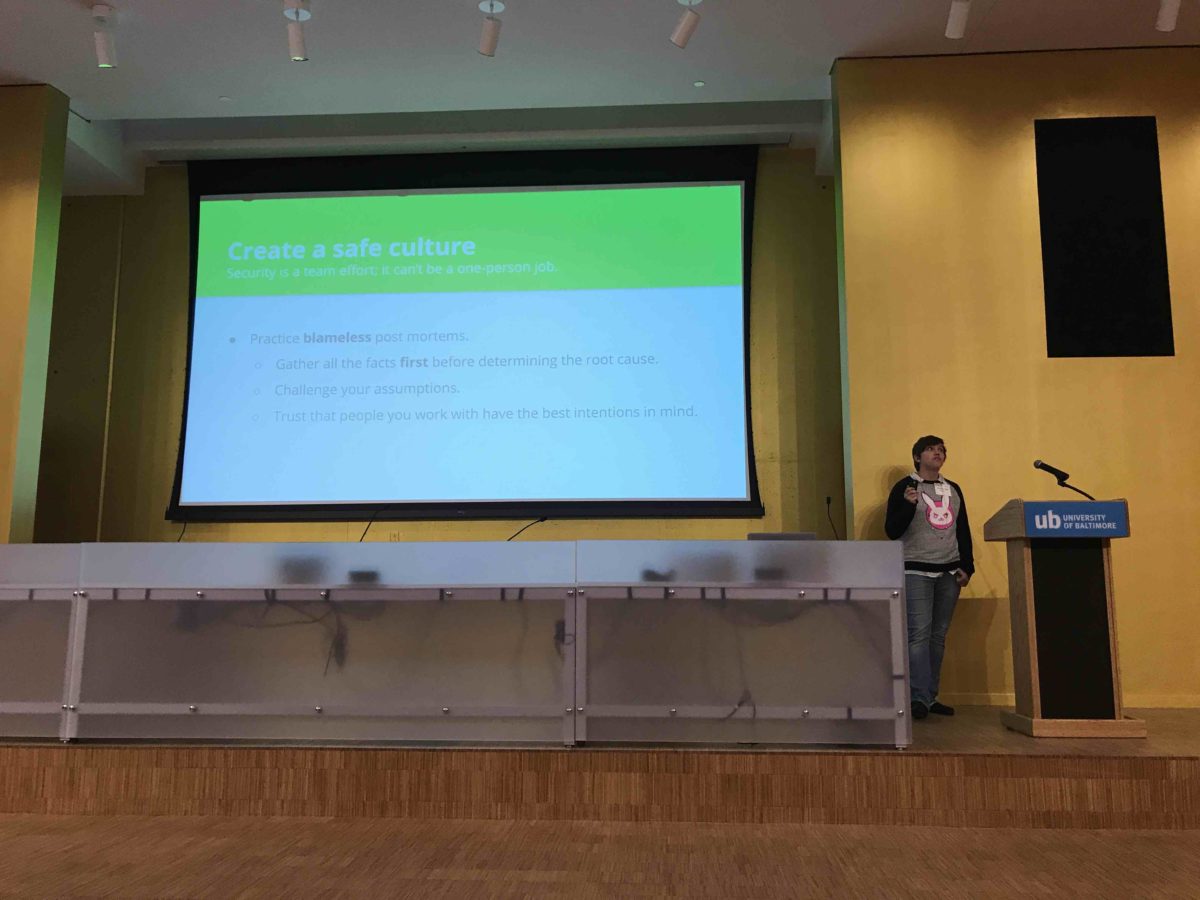At the very end of the #BIW17 Dev Talks, Sarah Jennings made a statement that summed her approach to developing and testing new products.
“You are always programming human behavior more than technology,” the Director of Ad Innovation at Oath said.
It doubled as a theme for the entire Thursday afternoon event. Held at the University of Baltimore’s John and Frances Angelos Law Center, the Baltimore Innovation Week 2017 event featured a mix of devs working at startups, large agencies and the city of Baltimore. The talks followed a morning of introductory workshops in Javascript and Python, and attendees got a chance to connect further at a happy hour following the event at UB’s student center.
Here’s a takeaway from each speaker:
- There’s no security without the “U.” Olivia Brundage, an Information Security Engineer with D.C.–based Mapbox began the day with a look at cybersecurity, and how it can be more approachable. Two-factor identification may be annoying, but it saves a lot of time later. Her final slide, which read “Sec_rity” was one of our favorites of the day.
- Data is powerful. Figure out how to use it. Agora Financial Web Director TJ Tate said collecting customer data can provide lots of new insights. But it’s important to establish what goals you want to achieve before that data goes to marketers and others.
- Ask why, why, why. At the City of Baltimore Department of General Services, Babila Lima and Varghese Paranilam spearheaded a tech-driven solution to the city’s process for handling building maintenance. The goal was to eliminate paper from the process. As Lima described, that involved peeling back many layers of the system, from disparities between service in downtown and parts of the city beyond North Ave. to routes to the dispatch system.
- Augmented and virtual reality don’t work for businesses alone. Archer Group’s Le’Rhone Walker detailed how the Delaware digital agency added machine learning using tools like TensorFlow and Amazon Rekognition to the immersive technologies.
- Get outside the digital bubble. Mind Over Machines Director of Emerging Technology Tim Kulp discussed the cutoff from the physical world that exists when a person has headphones on or is behind a mask. “That has its place,” Kulp said. “Not in business interactions.” Augmented reality, on the other hand, creates an environment where the digital and the physical interact. And you don’t lose eye contact.
- Clojure encourages the composition of simple functions into more complex ones. Milt Reder of Yet Analytics and Gary Trakhman of Arena.io provided an overview of Clojure. The 10-year-old language is a dialect of Lisp, which has been around since the 1950s. It’s built on a key principle: “Code is easier to reuse when it changes less than you do.”
- “The only way that you can really, truly know whether something is the right thing to do or not is to try it.” Inside her workplace at Oath or in the grocery store, Sarah Jennings is constantly looking for feedback on new products. She discussed the value of rapid prototyping, and testing products on the people who will use them. Designers often think their medium is pixels. “Make it non-negotiable to get user feedback,” she said.
- “Why SANTA? He makes a list and checks it twice. He assumes everyone is naughty.” For app creators, operating at scale presents data challenges that Deepak Jain is addressing at AiNET. The founder discussed his company’s tools, one of which is called SANTA, short for Storage and Network Trust Arbitrator.







